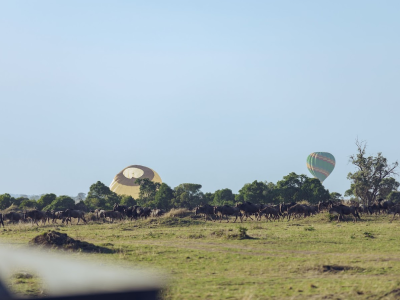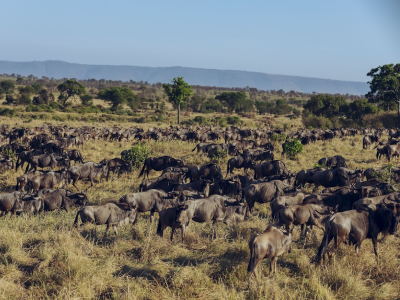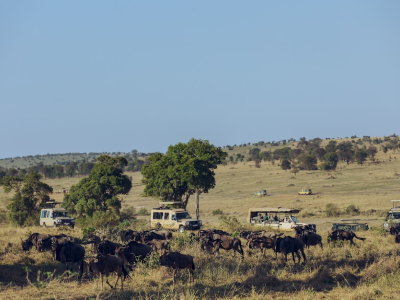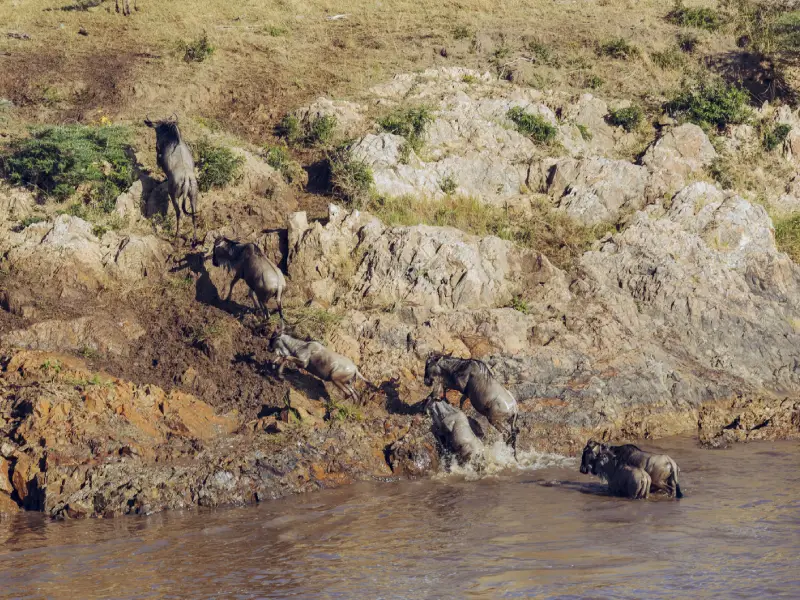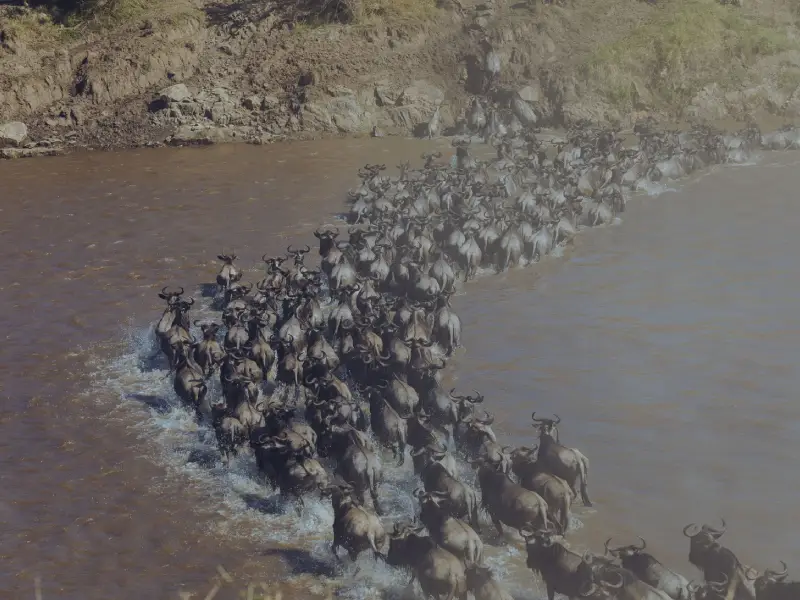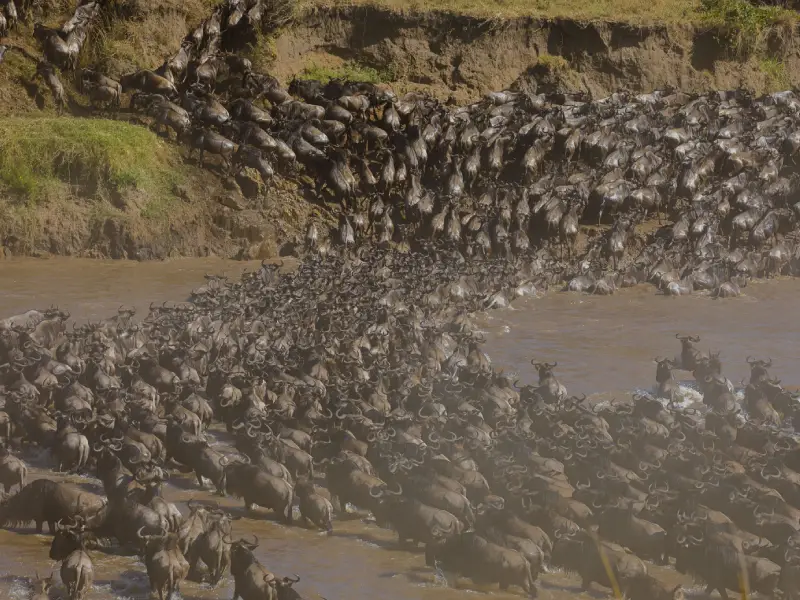Discover
serengeti-migration
A WORLD UNTOUCHED, TEEMING WITH LIFE AND NATURAL DRAMA.
Safari Bliss – Served Serengeti Style
The “Great Migration,” also known as the Serengeti Migration, is one of the most remarkable natural phenomena. Every year, millions of wildebeest, zebras, and gazelles go on a circular voyage across the Serengeti ecosystem, spanning more than 800 kilometres.
The migration starts in the southern Serengeti region between January and March, during the calving season, when thousands of wildebeest offspring are born. This results in the attraction of predators such as lions and hyenas, which generates an intense wildlife spectacle. The herds traverse river crossings and encounter predators, such as crocodiles, as they migrate north to Masai Mara by May.
The cycle is completed when the herds return to the Serengeti in October due to the brief rainfall. The resilience and interdependence of the fauna of the Serengeti are illustrated in this natural phenomenon.
Let’s gain a little bit more understanding about Serengeti Wildebeest Migration in detail from the read below:
What Is Unique About the Serengeti Migration?
The Great Migration is not merely a wildlife movement; it is a lifelong memory that reveals the raw majesty and intricate balance of nature. This event is genuinely remarkable for the following reasons:
Circle of Life: Witness the beginning of new life as thousands of wildebeest calves are born during the calving season. It’s a time of renewal, but also one of survival, as these vulnerable newborns quickly adapt to the challenges of the wild.
Dramatic Predator-Prey Interactions: The migration brings predators like lions, cheetahs, and hyenas into action. Intense scenes of pursuit and escape showcase the constant struggle for survival in this untamed world, offering a rare glimpse into nature’s raw dynamics.
Ever-Changing Landscapes: The Serengeti’s beauty transforms with the migration. The lush grasslands during the calving season and the earthy tones of the dry season create stunning backdrops for the wildlife drama.
A Limited Window of Opportunity: The calving season, from January to March, is brief but unforgettable. This exclusivity makes the experience even more special for travellers who get to witness the start of this grand journey.
A Haven for Scientific Research: The migration is a treasure trove for researchers studying wildlife behaviour, ecosystems, and conservation. The insights gained here are essential for protecting this incredible natural phenomenon.
Plan your Tanzania Safari to the Serengeti during the migration season to experience these extraordinary encounters firsthand. It is an adventure that you will never forget, and each visit offers a new story.


